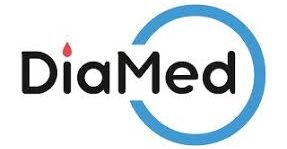Abstract:
This article delves into the synthesis and chemical properties of methylamine, a simple yet versatile organic compound with widespread applications in industry, research, and pharmaceuticals. By examining laboratory methods for its production, as well as its diverse chemical reactions and uses, this study aims to shed light on the significance of methylamine and its role in modern chemistry.
Introduction:
Methylamine, with its molecular formula CH₃NH₂, serves as a fundamental building block in organic synthesis, offering a wide range of chemical functionalities and structural motifs for designing complex molecules and functional materials. Understanding its synthesis and reactivity is essential for unlocking its potential in various scientific and industrial applications.
Laboratory Synthesis:
- Direct Amination of Methanol: The primary method for synthesizing methylamine involves the direct amination of methanol using ammonia as a reagent and a metal catalyst such as copper or nickel, which facilitates the formation of methylamine through a catalytic hydrogenation reaction.
- Reductive Amination: An alternative approach to methylamine synthesis is through reductive amination, where formaldehyde or its derivatives react with ammonia or amines under reducing conditions to yield methylamine and its derivatives.
Chemical Reactions and Applications:
- Nucleophilic Substitution: Methylamine serves as a nucleophilic reagent in various organic reactions, including nucleophilic substitution, reductive amination, and imine formation, enabling the synthesis of pharmaceuticals, agrochemicals, and fine chemicals.
- Intermediate in Organic Synthesis: Its versatile chemical properties make methylamine a valuable intermediate in the synthesis of numerous compounds, such as amino acids, pharmaceuticals, and specialty chemicals, with applications in drug discovery, materials science, and crop protection.
Industrial and Pharmaceutical Uses:
- Pharmaceutical Intermediates: Methylamine derivatives find applications as intermediates in the synthesis of pharmaceutical compounds, including antihistamines, antidepressants, and antiviral drugs, due to their biological activity and pharmacokinetic properties.
- Agrochemicals and Fine Chemicals: Methylamine derivatives are also utilized in the production of agrochemicals such as herbicides, insecticides, and fungicides, as well as in the synthesis of fine chemicals and specialty materials for industrial applications.
Conclusion:
In conclusion, methylamine represents a foundational molecule in organic chemistry, with broad utility in laboratory synthesis, industrial manufacturing, and pharmaceutical development. By elucidating its synthesis, chemical reactions, and applications, researchers can harness the potential of methylamine for innovation and discovery in chemistry and related fields.
You can find more information about this topic on the following website: https://bbgate.com/tags/methylamine.
